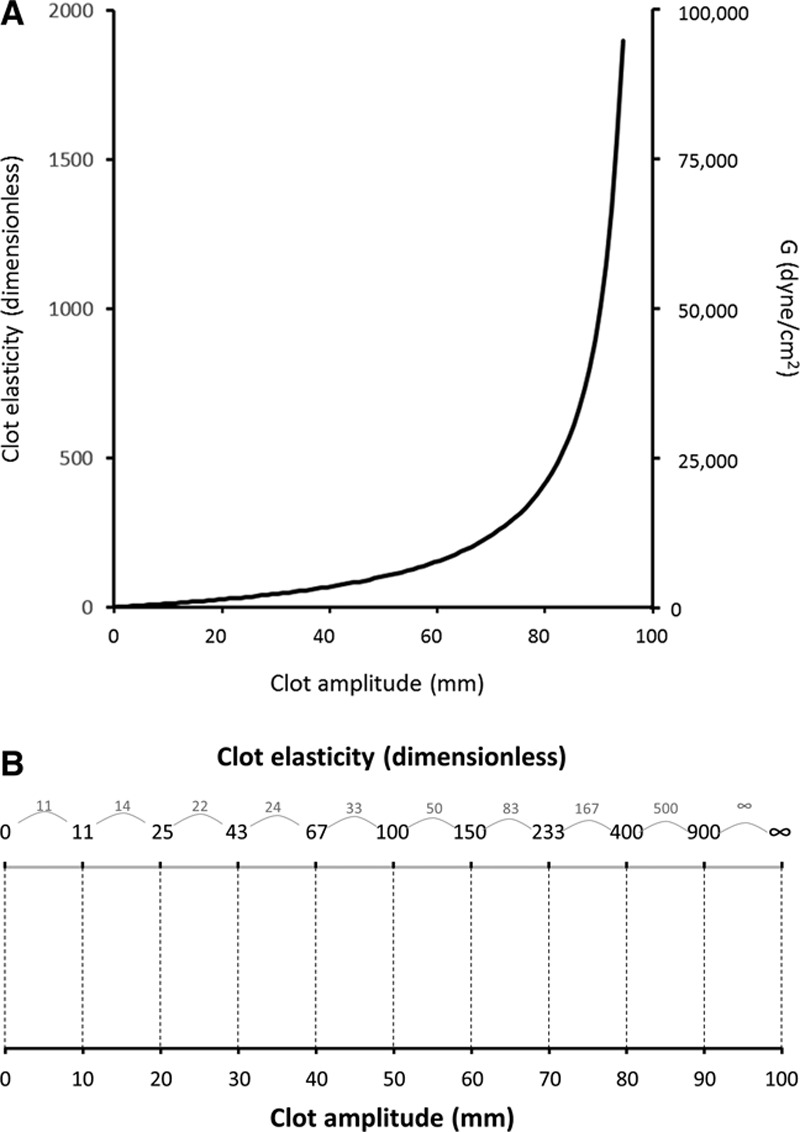Figure 1.

Relationships of clot amplitude (e.g., A) with clot elasticity (e.g., E for TEG®; CE for ROTEM®) and shear modulus (G). Because a specific increment of clot amplitude is associated with different increments of clot elasticity or shear modulus, depending on the initial value of clot amplitude, the relationship between amplitude and elasticity or shear modulus is nonlinear. In A, the single curvilinear line can show relationships of clot amplitude with both G and clot elasticity because G is 50 times clot elasticity. With respect to TEG® parameters, E = (100 × A)/(100 − A) while G = (5000 × A)/(100 − A). The conversion scale in B illustrates in a different way how clot amplitude is converted to clot elasticity; 10-mm increments in clot amplitude are associated with variable increments in clot elasticity. Configuration of a viscoelastic device so that the primary output is clot elasticity would enable the platelet component to be calculated by subtracting the primary FIBTEM reading from the primary EXTEM reading. A = Clot amplitude at any specific time (TEG® or ROTEM® notation); E = clot elasticity at any specific time (TEG® notation); CE = clot elasticity at any specific time (ROTEM® notation); G = shear modulus at any specific time.
